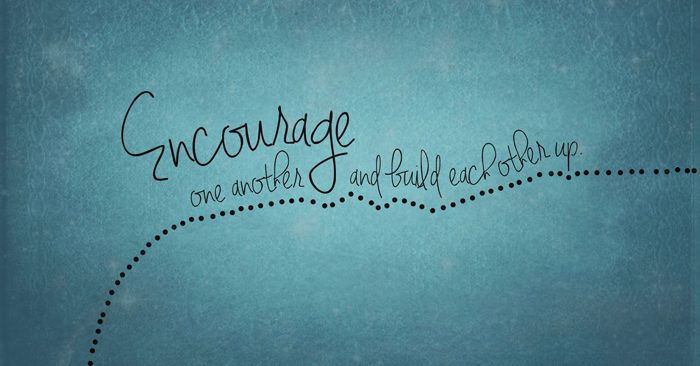Body Image & Eating Disorders

Please watch this video and follow along below:
Body Image Defined:
In its simplest term, body image is the way we think about our physical appearance. Having a healthy body image means that most of your feelings, ideas and opinions about your body and appearance are positive. They allow you to feel comfortable and confident about your body. It means accepting and appreciating your body and feeling mostly satisfied with your appearance.
- Does this mean I have to love my body all the time to have a healthy relationship with it? No! Healthy relationships involve conflict–it’s a matter of handling the conflict in a way that is not damaging to your mental, physical, or emotional health.
- Sometimes a healthy body image or #bodypositivity is accepting your body in the here and now, even if you maybe are not fully satisfied with how you may look or feel. In these moments it is important to think of ways you can love your body well even if you may want it to look differently–”believing your body IS good even if you don’t believe it LOOKS good”
- Sometimes it’s not about your body at all–we need to refocus our minds to not focusing so much on our bodies, even in a positive way.

So how do I develop a healthy body image?
1.Become Aware. 
The first step to changing a habit is AWARENESS. To make yourself aware of your self-talk, make a journal of your self-talk surrounding your body. This could be a voice memo or note on your phone too if you aren’t into journaling.
2.Change the dialogue.
Replace negative self-talk with positive such as ”my body is an instrument, not an ornament”
Action Step: Find affirmations (see verses in your playbook) that work for you that affirm a positive body image. Post these on your mirror, desk, computer, car dashboard, anywhere you will see them often. (I AM app for affirmations is a great tool for daily automated reminders). Examples: “my body is strong and capable”, “my body birthed a child”, “my body built a playhouse for my children”, “my body…”. Our brains can build new habits if we practice replacement thoughts on a daily basis. Over time, you will be more conditioned to think positively and affirming about yourself than negatively. This does not mean you won’t ever struggle with negative thoughts again, it just means those thoughts will be easier to overcome and challenge over time.
3.Change what you look at.
In a world of constant information overload and social media, ask yourself, what am I taking in/looking at/following. Are the accounts I follow encouraging body obsession or restrictive/harmful eating habits due to negative body image, obsession with eating healthy or pictures of only one body type…Ask yourself, how are these images affecting me?
Action Step: Change it up! Unfollow the accounts that you think are negatively affecting how you see yourself or causing you to compare yourself to others.
4.Change the perspective.
”Your body is the least interesting thing about you”
Each time you identify something you do not like about your body, identify something else about you that you feel good about; for example, you have the thought “Ugh, I hate my thighs!” or “My arms aren’t muscular enough”, etc. you might say “I am making good grades in school”, “I am a great singer”, “I am a caring and loving person”. Similar to giving ourselves positive body affirmations, this skill takes us a step further in not making our thoughts all about our body. Pause video and practice!
Eating Disorders & Trauma:
Very high correlation between eating disorders and anxiety..meaning anxiety preceding an eating disorder.
Negative self talk takes the human body right into stress response. Stress responses are very graded meaning could be small or could be large. The bottom line is when we are hyper-producing cortisol because of the stress, the self chosen stress, cortisol and insulin will signal the body to store weight, store fat, and not build muscle.
There is a certain amount of humans that are just weight loss resistant, no matter what they do. However, there’s often there’s a history of traumatic events for these people, more specifically as children. There were messages they heard telling them they had to be a certain way.
Eating disorders start out as adaptive behavior in an effort to soothe and in order to feel safe and secure. Very often what happens is the person is dissociating with their body and it becomes maladaptive behavior.
There is a big connection between body image and trauma. The world tells us how we should view our bodies (sadly incorrect though). Marketing for beauty products starts with telling you what’s wrong with you…and then they give you a solution. It’s all tied into, we’re being driven by this “you’re not good enough”. This is a major stressor to the body.
But there’s a depth of certain traumas that affect eating behaviors. If the trauma is extremely severe, then the eating disorder will be more severe and the person will be less likely to recover. Only 50% recover.
Poodle Science:
https://www.youtube.com/watch?v=H89QQfXtc-k
TEDTalk Video:
https://www.youtube.com/watch?v=uDowwh0EU4w
Take it Further:
https://courses.beautyredefined.org/courses/body-image-resilience-program
Affirmations app:
https://apps.apple.com/us/app/i-am-positive-affirmations/id874656917
Verses for Encouragement:
Psalm 139:14 “For you formed my inward parts; you knitted me together in my mother’s womb. I praise you, for I am fearfully and wonderfully made.”
Ephesians 2:10 “For we are God’s masterpiece. He has created us anew in Christ Jesus, so we can do the good things he planned for us long ago.”
1 Corinthians 6:19-20 “Do you not know that your bodies are temples of the Holy Spirit, who is in you, whom you have received from God? You are not your own; you were bought at a price. Therefore honor God with your bodies.”
1 Timothy 4:8 “For physical training is of some value, but godliness has value for all things, holding promise for both the present life and the life to come.”
1 Samuel 16:7 “For the Lord sees not as man sees: man looks on the outward appearance, but the Lord looks on the heart.’”
Genesis 1:26-27 “Then God said, “Let us make man in our image, after our likeness.
Eating Disorders
Please watch the below video:
Journal Questions:
1. Sean shares that his eating disorder started when he was bullied in middle school. What are some practical things we can do to ensure that bullying does not have this life altering impact on students?
2. Charryse Johnson mentions that eating disorders are a nonverbal way of communicating what people are feeling. What are some ways that we communicate nonverbally when we are overwhelmed with emotion? What are some practical ways we can encourage someone to verbally communicate so they do not fall into an eating disorder?
3. Control is at the center of many eating disorders. Have you also experienced this in your relationship with food? What are the dangers of food offering us “comfort” when we feel like our emotions are uncontrollable?
4. Perfectionist personalities can sometimes lead to eating disorders. Why do you think this is the case? If you have perfectionist tendencies, what unhealthy methods have you used when feeling overwhelmed?
5. Since food is a part of all of our lives, and we all, at times, suffer from uncontrollable emotions and perfec- tionism, we can all feel empathy towards those with a diagnosed eating disorder. How can a heightened sense of self-awarness help us as we try to empathize with those suffering from a diagnosed eating disorder? What are healthy ways to express empathy?
6. Chelsey mentions that she could not control her anxi- ety, so she controlled her eating. Why is this realization important to understand? What happens if we disconnect from symptoms of mental illness and do not get to the root cause?
7. Chelsey says that even her friends did not know what she was going through. What are some basic questions or actions we can take if we are concerned about someone who might need professional help?
8. Charryse Johnson mentions that anorexia is the dead- liest mental illness because when you’re malnourished in your body, you’re malnourished in your brain. Why is this important information for our leaders in education to know? How can the school or church step in when a child has been diagnosed with an eating disorder?
9. Food is often used to celebrate and becomes central at major gatherings at homes, schools, and churches. What can we do to be more observant during these times and help identify those who are suffering from an eating disorder?
10. The video mentioned that recovery is a journey not a destination. Why is this important to remind ourselves as we walk alongside someone with an eating disorder?
11. Sean’s story ends with redemption as he says: “by making people food and seeing them smile, it’s my way
of feeding the world.” He has taken his greatest weak- ness and turned it into his greatest gift to the world. What can we learn from his story? What vices or “fail- ures” in my own life can I redeem and use for the good of others? Can you think of other people in your life who have taken their greatest weakness and turned it into their greatest gift?
12. If I think I am suffering from an eating disorder, what are the first steps I need to take to begin my recovery?
Scripture Reading:
- Psalm 139:14
- Proverbs 3:5-6
- Colossians 3:2
- Romans 12:1
- Psalm 145:18
- Psalm 118:8


